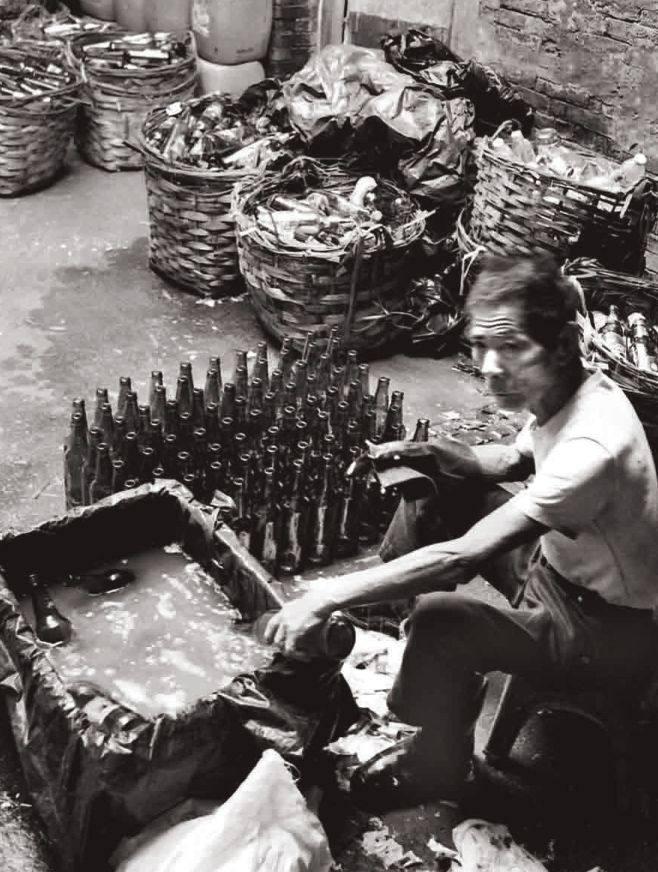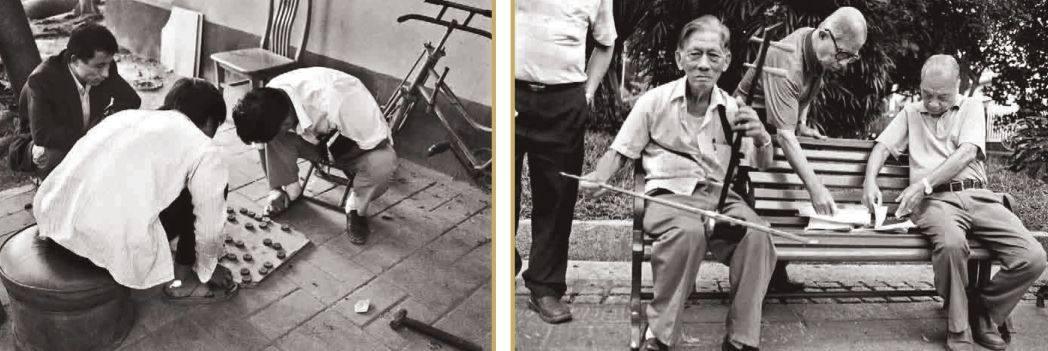Macao and Beijing on the Sly A European’s Impressions of His First Visit to China
By MARCOS FERNANDES
I recently made a trip to China. Though I only had time to visit three places – Hong Kong, Macao and Beijing – the country made a deep impression on me.
For one, it was nothing like I expected. I had arrived with a backpack and a good camera, hoping to capture some snapshots of traditional life in Chinese streets. But at the same time I suspected that the old ways had disappeared to make way for grand buildings and other symbols of newfound wealth. I couldnt have been more wrong.
For sure, the glitz and ritz are there, but by no means has it replaced street life. Everywhere I turned, I saw people taking advantage of public places to play strange (for me) musical instruments, practice Tai Chi and dance. Cars crowd the roads, but that doesnt mean locals have abandoned their bicycles. Seeing cyclists expertly weave their way through the traffic, sometimes balancing an infant on their lap, was both a delight and an affirmation that traditional China lives on.
My first port of call was Macao, long a Portuguese colony before it was returned to China in 1999. I traveled there from nearby Hong Kong.
My first impression of the coastal cities actually smacked me in the face as I stepped out of Hong Kong airport – the air. Its heavy, hot and humid. In summer, you can almost see it. Though Macao and Hong Kong are located only just south of the Tropic of Cancer, they boast a humid subtropical climate.
I boarded a ferry to Macao from the Hong Kong ferry terminal. The two special administrative regions are 60 kilometers apart, but the ferry covered the distance in no time at all. Looking out of the window, we felt like we were flying. We almost were – the ferry was a hydrofoil, its hull rising far out of the water at full speed.
I disembarked amid jostling crowds. Most were businessmen who headed to Macao from Hong Kong to try their luck in the casinos. They hit the tables in the evening, spent the night in a hotel –hopefully paid for by winnings – before heading back to their lives in Hong Kong in the early morning.
I avoided the casinos. The streets were what I wanted to see. I started out from the old town, at the center of which is Senado Square. Its surrounded by picturesque colonial buildings and is paved in classic Portuguese style. The stones of the pavement emanate out from the square in black and white waves.
I had grown used to the humidity by now, and shifted my attention from breathing to the surroundings. No doubt, it was a strange feeling standing on Senado Square – architecturally, the area looked like a small old Mediterranean village. But I was in Asia! The unintelligible chatter of the local Chinese dialect filled my ears and I felt disorientated.
This blend of the Far East and the classic West is everywhere in Macao. I found it, for instance, near the baroque ruins of St. Paul Cathedral and along the Fortaleza do Monte fortress. These sites are classic “Old Europe,” but are surrounded on all sides by rows of Chinese food stalls and knick-knack shops featuring signs written in traditional Chinese characters.
I also felt the East-West blend in the Camoes Garden, a small Eden in a residential area. Old men gather there to perform in Chinese musical ensembles, while younger ones play a variety of sports more familiar to Westerners, like basketball.
To prove Macaos Portuguese bona fides many locals will point out danta, or egg tart. But even though the delicacy is billed as the sister-treat of Portugals own natas, the Macanese variety is more like a distant cousin. Delicious in its own right, Macaos egg tart is another instance of East blending with West.
I encountered many things in and around Macao with which I associated the Orient of former days.
In the A-Ma Temple, for instance, on the southwest tip of the Macao Peninsula, I witnessed locals lighting incense sticks to pay homage to the goddess Matzu, who is believed to protect fishermen. Similar rituals were also performed in Taoist and Buddhist temples across Macao, as well as in Taipa and Coloane, two main islands under the special administrative region.
People seemed to live slowly in Macao. Per head, the region is as wealthy as Hong Kong. But its less frenetic. As Macao develops its people have managed to retain their unique heritage and customs. It was extremely comforting to wander by the Fortaleza do Monte at the end of a busy day, sit down on a park bench and admire the Tai Chi practitioners perform the same routine performed by the many generations before them.
To the North
A European doesnt travel halfway around the world just to see a former colony that in many aspects resembles his homeland. I wanted to meet the unknown and indulge in my fascination for China. In my mind, China was still an exotic entity conveyed to me through films like The Last Emperor and Once Upon a Time in China. In short, after Macao I wanted to delve deeper into the Far East, and this meant heading north.
Id heard that the train trip from Shenzhen, an hours ferry ride from Macao, to Beijing is scenic and well worth the 24 hours spent aboard. Owing to time restrictions, however, I decided to take a flight and rushed through Shenzhen by taxi to the airport. Our taxi driver did not speak English. I do not speak Cantonese, nor Mandarin. To indicate my destination, I extended my arms out and mimicked a jet taking off. Message received – the driver smiled and took me straight to my terminal.
Arriving in Beijing, the capital felt like a giant village. Its broad avenues are endless, but just behind them lie a myriad of crisscrossing hutongs, or alleyways. Leave an avenue and enter a hutong, and you feel like youve discovered time travel.
The avenues are the arteries of modern Beijing. Vehicles dance to a chaotic rhythm, part of the grand symphony of the city. Drivers honk to overtake other cars, honk as a warning to potential jaywalkers, and honk – it seems – just for the fun of it. Pedestrians cross wherever they can, often stopping cars to do so. Add a swarm of bicycles to the mix, and you get the idea. But somehow, the traffic keeps flowing. I saw remarkably few accidents. Its all a metaphor for how the capital just works, despite the enormous population, despite the rip- roaring construction.
The Chinese capital city offers climactic peace for European visitors, especially those, like me, who arrive from the humid south of the country. The skies in Beijing and Macao bore resemblances. Macaos was gray most of the time –pregnant with heavy rain. Beijings was gray also, though if I looked close enough I could make out the yellowish tinge of pollution on the horizon. The gray was smog – that wonderful English portmanteau that combines “smoke”and “fog.”
I had to look a little harder, but I eventually found many lovely parks in Beijing. The scenes were similar to those in Macao – slow bodies moving gracefully to Tai Chi, frantically diving figures engaged in serious games of shuttlecock, and old men showing off their footmanship with Chinas version (the original) of a hacky sack.
My quest to find the ancestral spirit of Beijing led me to some of its best-known tourist destinations, including the Forbidden City, Tiananmen Square, Jingshan Park, and the Temple of Heaven. But I found it hard to feel the original essence of those places – tourists were simply everywhere.
The hutongs saved me. It was in the winding alleyways that the tourist chatter of familiar European languages died away, and I finally got a taste of Old Beijing. It still exists! There it is, in the hutongs, among the old men playing Chinese chess on the sidewalk, among the young children sitting on the stairs leading up to old courtyards eating bowls of rice. I felt like a stranger and a tourist pulling out the camera in the hutongs –the people in my photographs, after all, were just carrying about their normal lives.
My advice to any potential visitor to Beijing is to go and get lost in those ancestral alleys. To know Old Beijing requires walking, and plenty of it. Walk, and youll discover small streets with beautiful rooftops and grand old walls. Color defines the buildings of the hutong areas – yellow, green, red and blue, just name a few. Bikes are parked everywhere; unlike on the avenues, the cars are the odd ones out. Trees arch out above you, and their foliage hides you from the sun.
In the hutongs, its quiet, and hard to believe youre standing in the center of one of the worlds largest cities. You hear nothing but locals walking and chatting, and maybe a rickshaw driver calling for customers.
For sure, Macao is a blend of East and West. The traditional fights for space alongside the modern; Tai Chi practitioners hone their art on a square in front of a neon-lit casino. But in Beijing, the traditional doesnt fight – its already carved its own space out of the heart of the city, and lives on there on its own terms. For “the Real China” head to the hutongs. But make sure you do it on the sly, so as to not disturb the peace.

